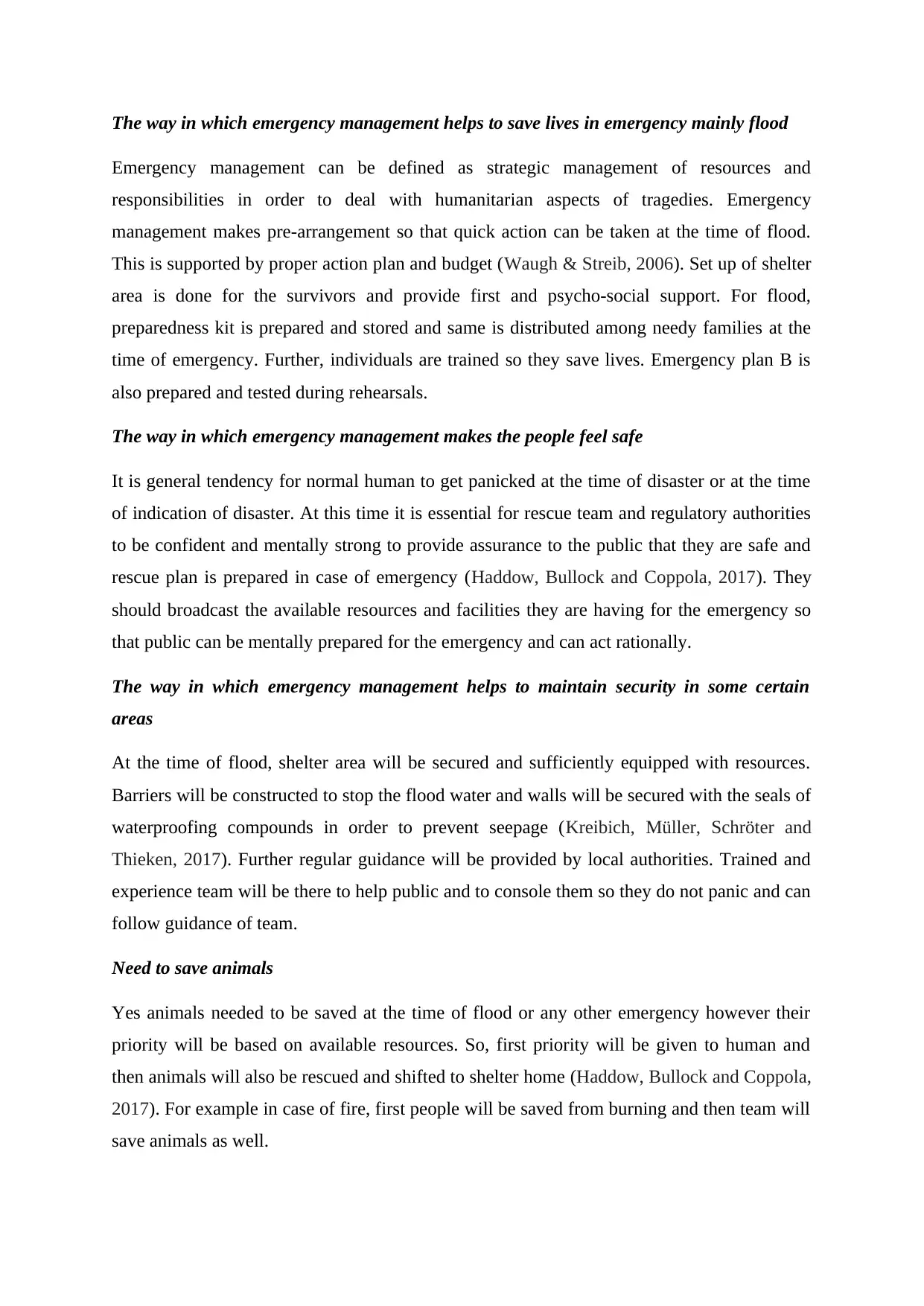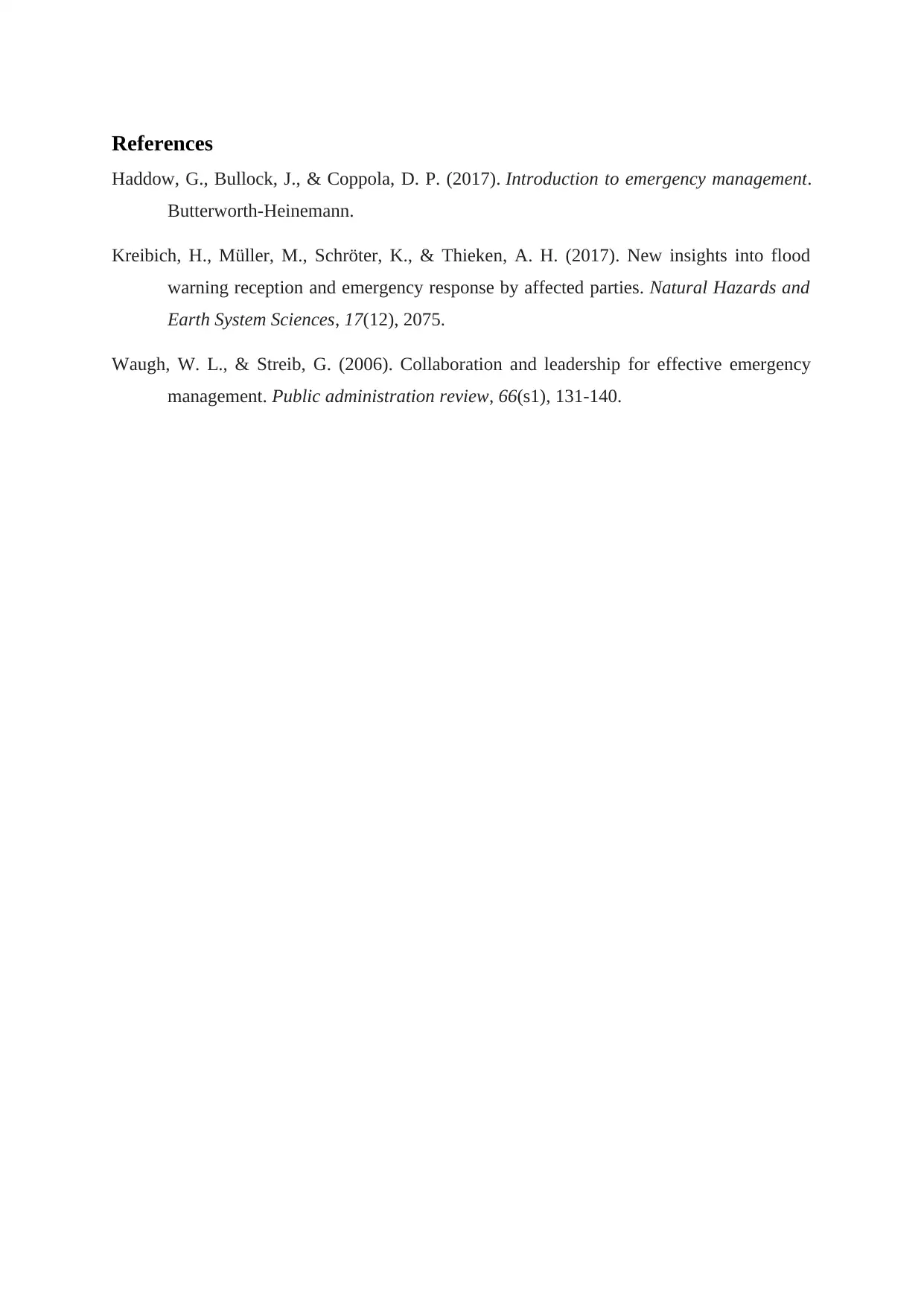Emergency Management Report: Flood Response, Safety, and Animal Rescue
VerifiedAdded on 2021/05/31
|3
|535
|49
Report
AI Summary
This report provides an overview of emergency management strategies during floods. It explains how emergency management teams implement pre-arranged plans, allocate resources, and establish shelters to ensure public safety. The report emphasizes the importance of preparedness, including the creation of emergency kits and the training of individuals. It also highlights the significance of maintaining public confidence, providing security in shelter areas, and rescuing animals during floods. The report references several key publications in the field of emergency management, such as Haddow, Bullock, & Coppola (2017), Kreibich, Müller, Schröter, & Thieken (2017), and Waugh & Streib (2006). These resources support the report's discussion on the role of emergency management in responding to and mitigating the impacts of flood events.
1 out of 3





![[object Object]](/_next/static/media/star-bottom.7253800d.svg)